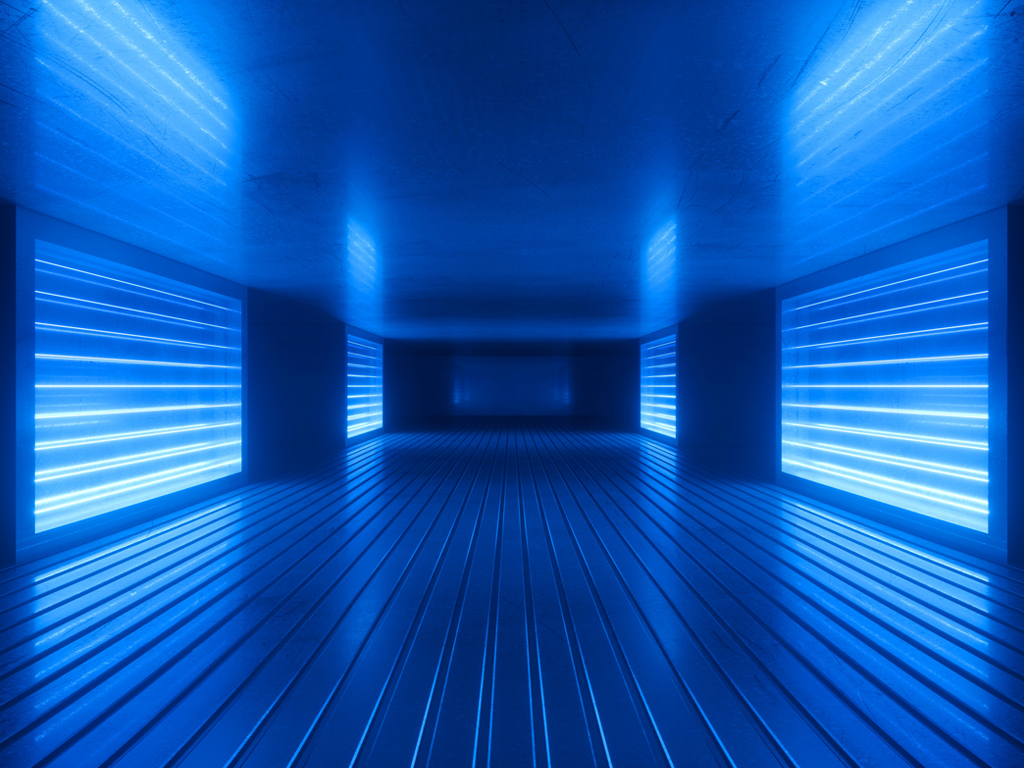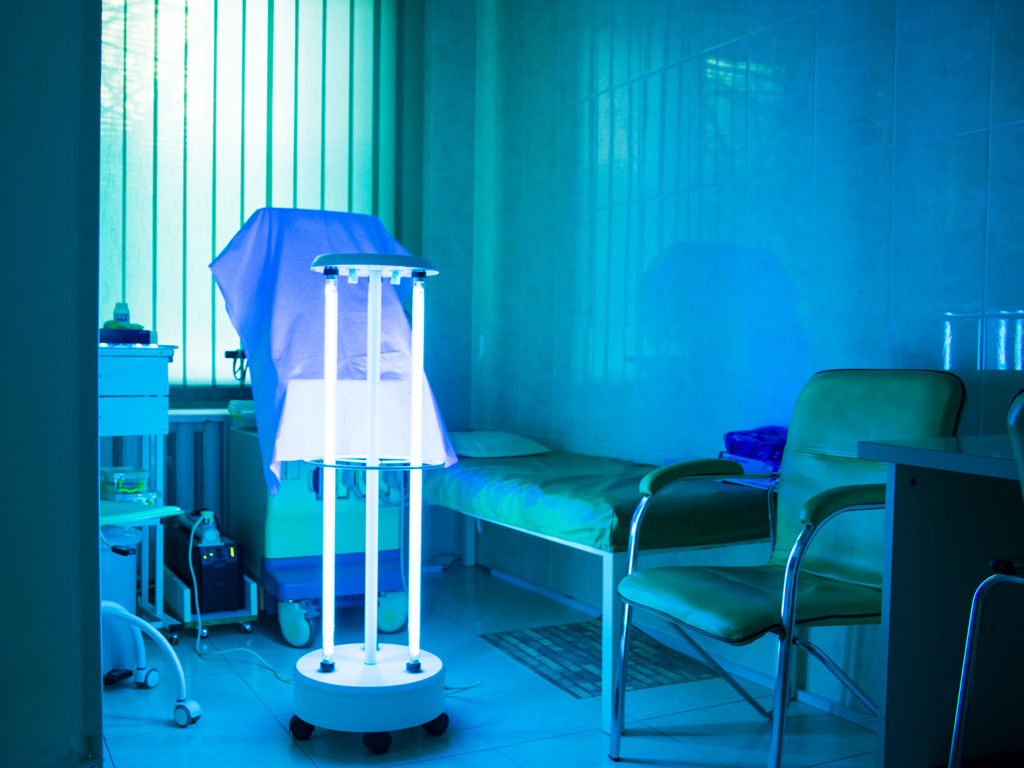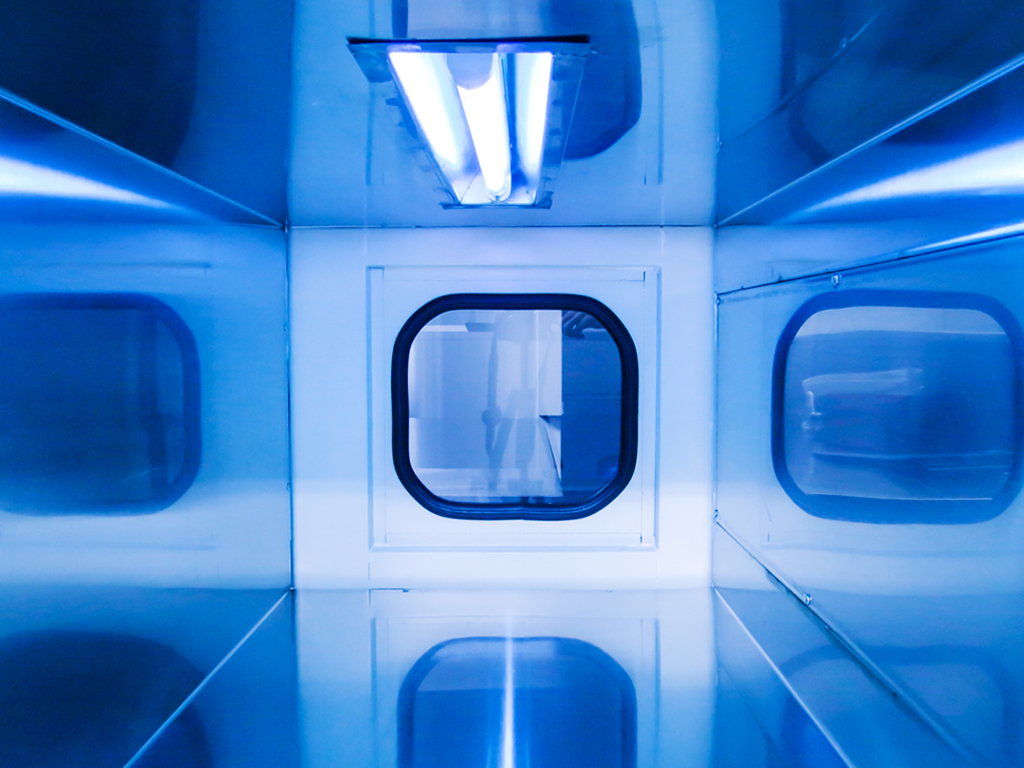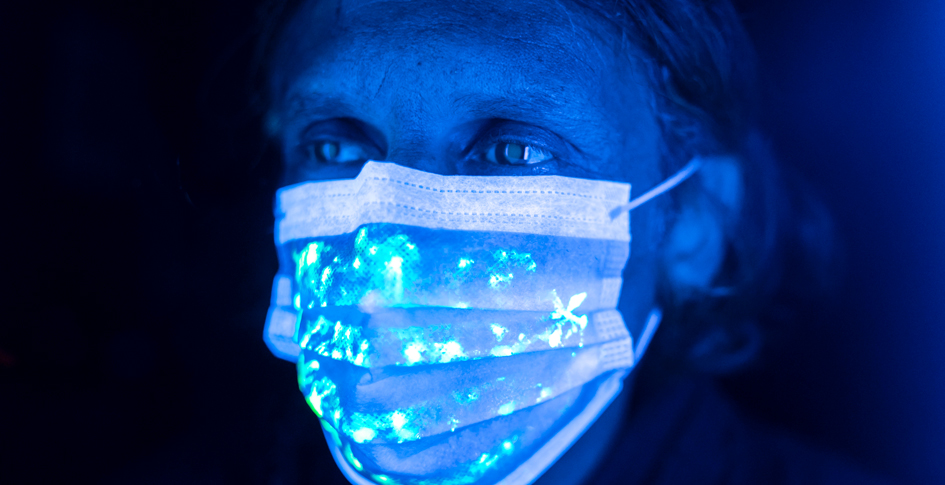Recently, the EPA's Clean Air in Buildings Challenge named Ultraviolet Germicidal Irradiation (UVGI) as a specific example of disinfection technology that can be used to enhance filtration. Congrats to UVGI on the PR boost, but we feel obligated to point out that many professional organizations (including the EPA itself) have serious concerns about the effectiveness and safety of UVGI. In this two-part article, we explore the advantages and disadvantages of ultraviolet air and surface purification technology so you can make the best decision for your organization.
In part two, we examine the disadvantages of Ultraviolet Germicidal Irradiation (UVGI) when used as an air & surface purification technology.
Disadvantages and Considerations when using UV Purification
UVGI air and surface purification has some key disadvantages aside from a lack of consistent test results for SARS-CoV-2 (see part 1). These disadvantages stem not from the fact that UV air and surface purification can't deactivate pathogens (it can), but that getting it to work properly requires factoring so many variables that many UV purification devices risk not doing what they are intended to do. As the EPA puts it in "Residential Air Cleaners: A Technical Summary":
"A number of studies report that the most important performance elements of a UVGI system are the type of UV lamp and ballast, relative humidity, temperature, air velocity, and duct reflectivity [...]The effectiveness of UVGI cleaners in killing microorganisms may also vary depending on the UV irradiation dose, system design and application, system operation characteristics, and the microorganism targeted for deactivation."
That's a lot of hoops to jump through! Let's summarize a few of them.
1) UV must be directly applied to the pathogen.
In a previous blog article, we discussed active vs. passive technology—that is technology that requires contaminants to pass through a mechanism vs. technology that does not. We explained that three types of UVGI (upper room, portable purifiers, and induct) are passive, while two types (whole room and far UV) are active. However, whether active or passive, UV purification's key consideration is that it needs to be directly applied to the pathogen in order to work.
For whole room UV, which can't be used in occupied rooms, this means that the surface can once again be infected once the UV light is switched off. It also means that pathogens shadowed from the light won't be disinfected. According to the FDA, "the virus or bacterium will not be inactivated if it is covered by dust or soil, embedded in porous surface or on the underside of a surface."
Incorrectly mounted UV purification systems also risk ineffectiveness. According to one study, "some germicidal luminaires are inefficient in their current design for releasing UV-C light. This is because they are designed with louvers to direct the light horizontally and not to allow it to disperse vertically; thus much of it is absorbed."
2) UV isn't designed for other contaminants besides pathogens.
We think the EPA puts it best: "No research or studies were found that show UV disinfection is effective in reducing dust mite and mold allergenicity or that UV radiation has the potential to remove gaseous pollutants." In other words, don't expect UV purification to reduce particulate matter or allergens. To be fair, ActivePure Technology doesn't directly address particulate matter or allergens either, which is why we often pair our technology with HEPA filters. Unlike UV though, products powered by ActivePure Technology have a good record against gaseous pollutants.2
 One possible configuration of induct UVGI in an HVAC system (Image credit: wacomka / Getty)
One possible configuration of induct UVGI in an HVAC system (Image credit: wacomka / Getty)
3) Incorrectly operated and maintained UV has several dangers.
Let's be very clear here: every product is distributed with the assumption that it is going to be used as directed, even ours. When a product isn't used as directed, safety and efficacy are put at risk. So we make the following observations not as a criticism of UV purification, but merely as a warning: if a UV lamp is improperly shielded, direct exposure can cause skin or eye damage. The same is also true for ActivePure, so for the love of IAQ, please follow the instructions carefully.
There is another safety concern with some UV lamps; they may produce ozone. Foresighted UVGI companies fix this problem by coating the lamp with a catalyst to inhibit this formation, but not all. So, caveat emptor.
4) Not all pathogens are created equal.
Pathogens can be sorted into a hierarchy of how easy they are to neutralize, and UVGI's overall effectiveness reflects that hierarchy. According to the EPA's aforementioned technical summary of residential air cleaners, "If properly designed, the UVGI cleaner in a typical airstream disinfection application has the potential to reduce the viability of vegetative bacteria and molds and to provide low to moderate reductions in viruses but little, if any, reduction in bacterial and mold spores."
For comparison, the ActivePure Medical Guardian was shown by an unaffiliated laboratory to reduce 99.99% of aspergillus niger fungal spores and 99.99% of bacillus globigii bacterial spores in 60 minutes.3
 An unoccupied hospital room being treated by a Whole Room UV lamp. (Image Credit: Shidlovski / Getty)
An unoccupied hospital room being treated by a Whole Room UV lamp. (Image Credit: Shidlovski / Getty)
5) Effective Dose = Intensity of Field x Time
Because UV purification technology relies on direct exposure, one must factor in the length of exposure in relation to the intensity of the UV field. Together, these factors determine the UV dose the pathogen receives. (Note that the intensity of a UV field changes with angle and distance. This involves its own series of complicated calculations as well.)
For whole room UV, which is mostly used to disinfect surfaces in hospitals, time isn't quite as important of a factor; after all, surfaces don't move. However, for portable and induct UV, these considerations are vital.
Many professionals are extremely skeptical of portable UV devices as a result. According to the EPA's aforementioned technical summary:
"Typical UVGI cleaners used in homes have limited effectiveness in killing bacteria and molds. Effective destruction of some viruses and most mold and bacterial spores usually requires much higher UV exposure than is provided in a typical home unit."
Private sources agree. TheHealthy.com similarly states, "though UVC light has the potential to kill bacteria and viruses, in a typical portable air cleaner you might buy at the store, it's unlikely the air will be exposed to the UVC light long enough to make an impact." Some portable purifiers overcome this difficulty by slowing down the air as it passes through the UV field. But such portable devices don't appear to be the norm.
Induct purifiers have similar difficulties. According to one study, "If air velocity is too high and the dose insufficient, a microbe may have a negligible response or even recover from the damage. Insufficient data exists [sic] to determine the shoulders or threshold doses of most airborne pathogens." Induct UV can try to accommodate this uncertainty by cycling the air through multiple times, but there's another issue. Air in an HVAC system moves 400 to 500 feet per minute. If a UV field is two feet long, pathogens will only be exposed for 0.3 to 0.25 seconds on each pass. Compare this to the nine minutes required in the above experiment to inactivate SARS-CoV-2. This means that the virus might have to pass through the HVAC system 1,800 times to be inactivated!
Companies can accommodate this difficulty by changing the intensity of the UV lamp. A more powerful UV field means less time is required for inactivation. If we assume ASHRAE's recommended dose of 1222 μJ/cm2 is correct, one would need a two-foot field with an intensity of 100mW/cm2 in the typical HVAC system. This is indeed doable; we just can't promise everyone is rigorously calculating the angle and setup of their UV lamps to create this effect.
Even the Illuminating Engineering Society–the "recognized technical and educational authority on illumination"–is skeptical of UV purification used as means to reduce the spread of disease. According to their committee report on photobiology:
"When UV is used in ducts, although it ensures that recirculated air does not have viable pathogens, it unfortunately does relatively little to prevent person-to-person transmission in a room where both an infectious source and other susceptible persons share the same air. For effective interruption of transmission, air disinfection has to occur in the same room where transmission is occurring."
The report goes on to say "Portable air cleaners can be placed in rooms where there is a risk of transmission, but moving large volumes of air through any device is difficult, limited by the clean-air delivery rate of the portable air cleaner. Often when the clean air delivery rate is converted to equivalent ACH, the result is a disappointing 1 to 2 ACH, far too little to effectively prevent transmission."
Any UV light which treats the air as it passes through a mechanism has to be exposed for long enough to work. But if one could treat the whole room continuously, it would solve this problem. Such a hypothetical brings us to the most interesting and controversial of UV air and surface purification technologies— far-UVC.
 Far UV aims to treat rooms continuously, but many have concerns. (Image credit: onurdongel / Getty)
Far UV aims to treat rooms continuously, but many have concerns. (Image credit: onurdongel / Getty)
The Curious Case of Far-UVC
If you do an internet search for "far-UVC", it will seem like a miracle. Supposedly far-UVC can disinfect 98% or more of pathogens in the air and on surfaces, but because it (again, supposedly) can't penetrate the outer layer of human skin, it's safe to use in occupied rooms.
If far-UVC is indeed a miracle technology, we'd be happy to celebrate it. But let's dig into some of these studies that claim to prove far-UVC's efficacy and safety. Take a look at the "Competing Interests" declaration of this study:
"The authors G.R.-P, D.J.B and A.B. have a granted patent entitled 'Apparatus, method and system for selectively affecting and/or killing a virus' (US10780189B2), that relates to the use of filtered 222 nm UV light to inactivate viruses. In addition, D.J.B has an ongoing non-financial collaboration with Eden Park Illumination, and the authors' institution, Columbia University, has licensed aspects of UV light technology to USHIO Inc."
If you are an air purification company, it is just plain responsible to hire an *unaffiliated* lab to test your technology. We do the same thing ourselves. However, we do not suggest hiring a lab staffed by scientists who hold patents on the same technology they are testing—scientists who are simultaneously employed by a university that stands to fiscally benefit from the success of the company which hired the scientists.
This one study is probably a fluke though. Surely, this one showing far-UVC is safe for mice, and which was cited in Fast Company magazine, has no conflicts of interest. Ooops, no, it was conducted by salaried employees of the same Ushio, Inc. Well, hmmm.
Alright, to be fair there are studies from parties without a horse in the race, and they are favorable. One scientist exposed his own arm to far-UVC at the dosage which is needed to inactivate SARS-CoV-2, and he noticed no skin damage even after extended exposure. However, he also notes this dosage is 65 times the recommended exposure limit for nonionizing radiation such as UV. The study concludes "what this research and other published literature clearly highlight is that the hazard of all wavelengths emitted must be appropriately assessed—it is too simplistic to state that far-UVC devices are 'safe for humans.'"
A 2021 survey of various studies of far-UVC over the past 100 years has the following to say about far-UVC: "The approach is very promising, especially for temporary applications, but the data is still sparse. Investigations with high far-UVC doses over a longer period of time have not yet been carried out, and there is no positive study on the impact of this radiation on human eyes. Additionally, far-UVC sources are unavailable in larger quantities. Therefore, this is not a short-term solution for the current pandemic, but may be suitable for future technological approaches for decontamination in rooms in the presence of people or for antisepsis."
We do not want to dismiss any new technology which could provide benefits to humanity. We think far-UVC should continue to be explored. But it also seems that the technology needs to be more thoroughly vetted before it is widely adopted.
 A UV test chamber (Image credit: LeafenLin / Getty)
A UV test chamber (Image credit: LeafenLin / Getty)
Seeing the Light at Last
This is the part of the article where we should tell you that we do everything UV purifiers do, but we do them better. We might mention that our technology doesn't require passing pathogens through a UV field, but instead uses a UV bulb and catalyst to distribute scrubbing molecules throughout the room.4 We might point out that our bulbs are coated to avoid the production of ozone.5 This is the part where we ought to cite about a dozen studies proving that we reduce 99.99% of pathogens, including the more difficult bacterial and mold spores that UV has trouble with. We might even be expected to add that our installation is so simple it can be performed by in-house personnel.
But, we are nothing if not tactful, so we won't mention these things. Instead, we'll let you form your own conclusions based on the data as it stands.
If having done that, you decide you'd rather use ActivePure than UVGI, well, who could blame you? Contact one of our air quality experts by clicking the button below to get started.
2 Lighthouse & ResInnova. (2021). "The School District of [Redacted] ActivePure Air System Study." Lighthouse Environmental Infection Prevention.
3 Balarashti, et. al. (2019). "Efficacy of Aerus Medical Guardian Air System against Various Bioaerosols" [Unpublished Lab Study]. Aerosol Research and Engineering Laboratories.
4 (2022). "ActivePure Technologies: Risk Assessment" [Unpublished Lab Study].
5 Intertek (2013). "BGA Ozone Report." Intertek.



